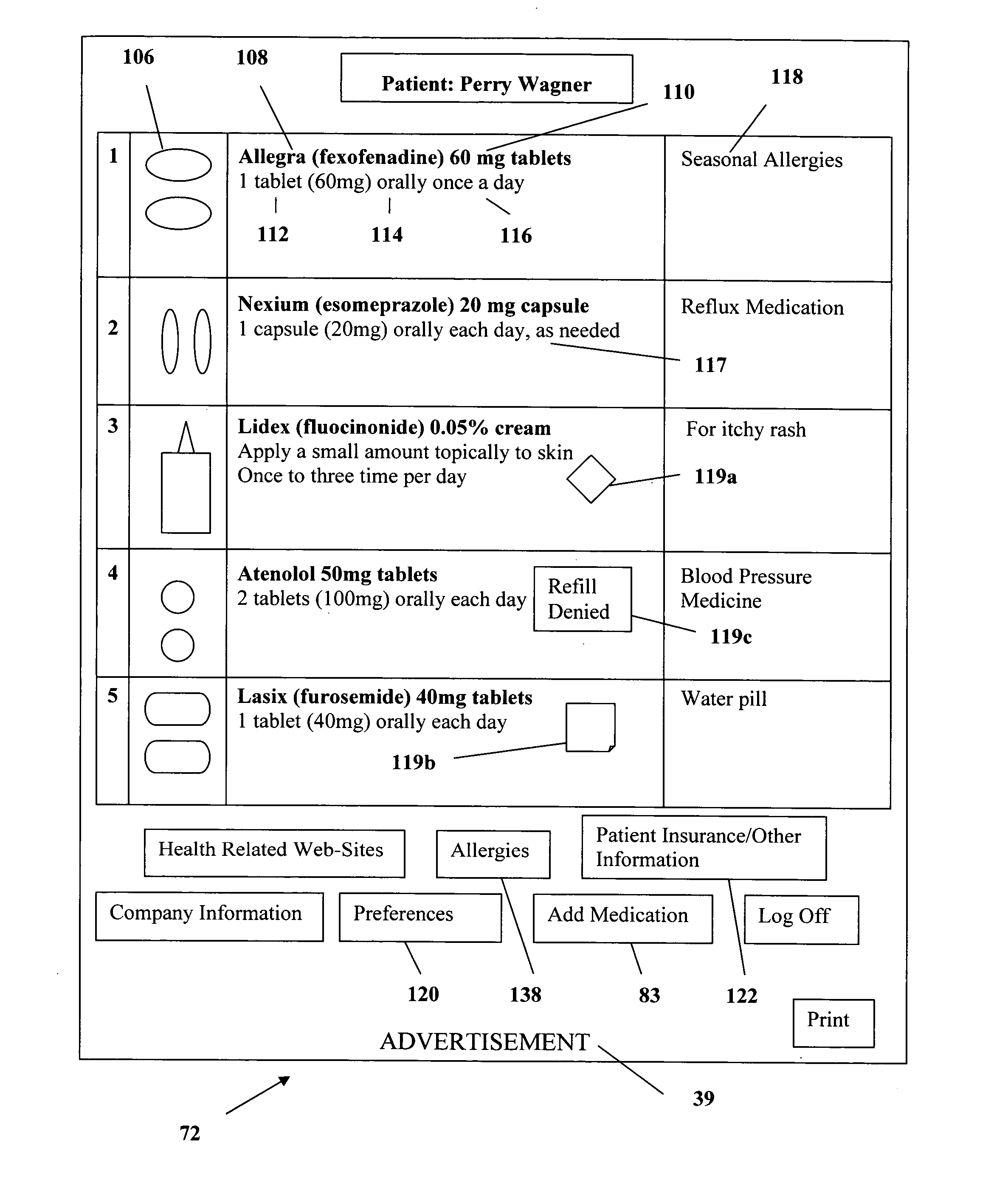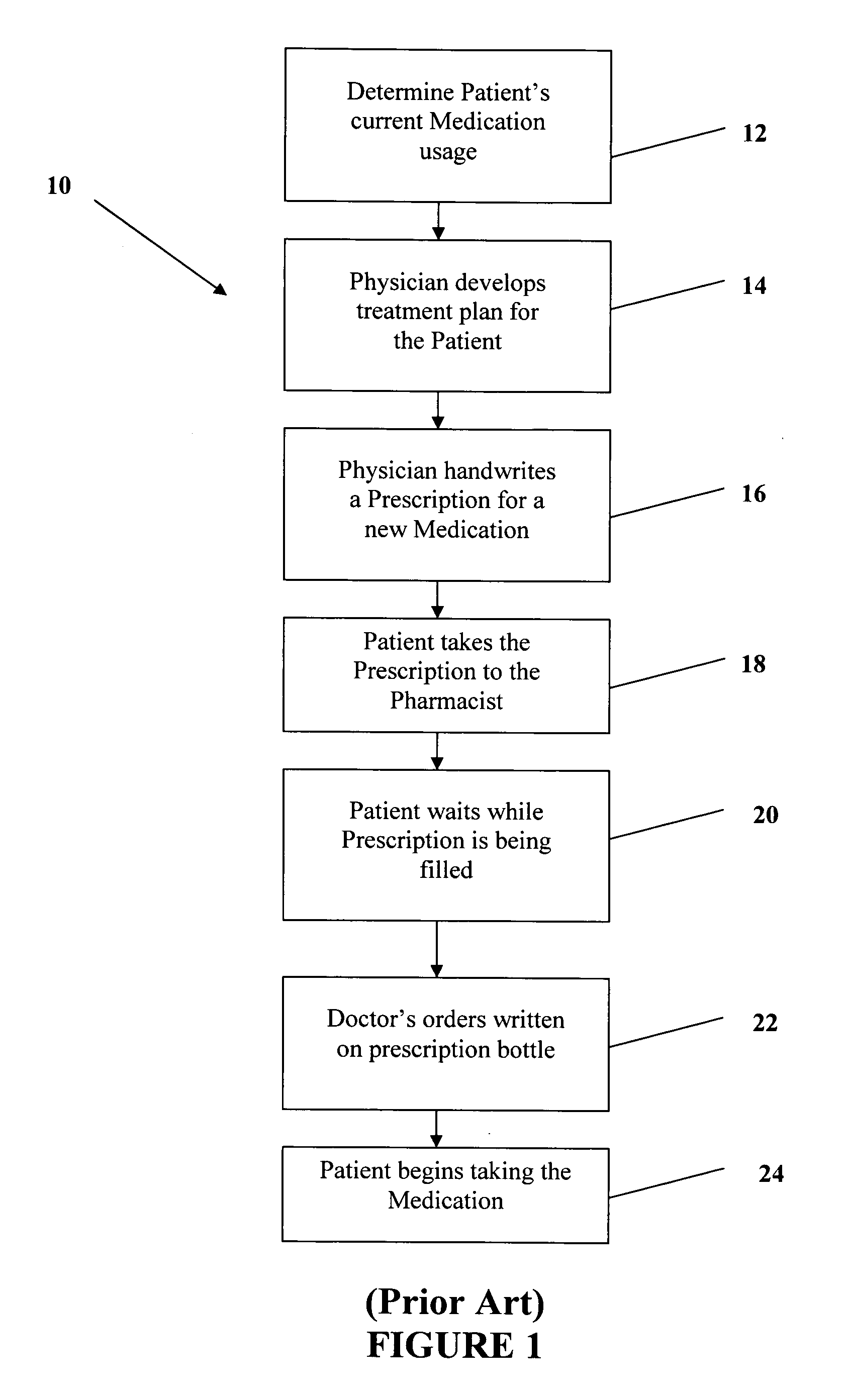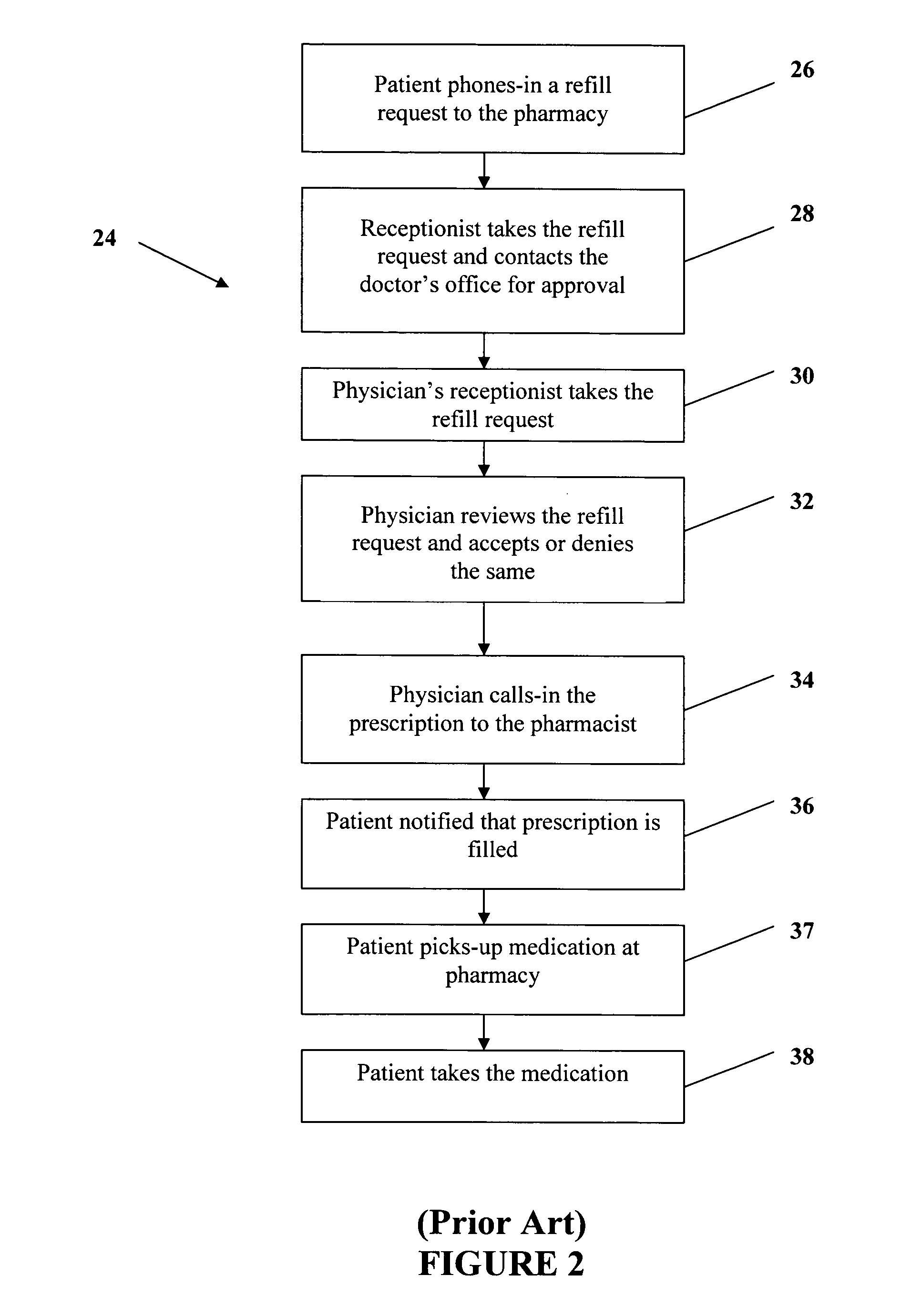Adverse drug events are medical situations where an error in prescribed and / or administered medication results in a negative physical reaction by the patient.
Such medication errors have caused allergic reactions, severe illness, permanent disability and even death in patients.
In addition to causing physical and emotional suffering to patients, adverse drug events are financially costly to hospitals and physicians who might voluntarily cover the cost of the mistake or pass the costs on to patients or insurance companies.
Adverse drug events may also subject the physician to professional liability.
Notwithstanding the significance of adverse drug events, the current system of managing a patient's
medication information, and prescribing and dispensing pharmaceuticals, often results in inefficient
data management, inaccurate prescriptions and improper dispensing of medications.
Moreover, medication errors may occur at any time during the
patient treatment process, from the physician's initial prescription order, to transcription, to dispensing, and finally to the administration of the medication.
These errors may occur due to a mistake by the physician,
pharmacist or patient during the treatment process.
For example, physician error may occur due to incorrect dosing on a prescription, incorrect frequency or
route, or prescribing a medication to which the patient has a known
allergy.
Unfortunately, in today's medical offices, there is limited time to
double check allergy information, drug interactions, prescription information and the patient's understanding of the
treatment plan.
Failure or inability of the treating physician to obtain a current and comprehensive listing of a patient's medications may also lead to an
adverse drug event.
For example, complete patient-specific information which is directly relevant to
treatment management for the subject patient is frequently unavailable to the treating physician.
Moreover, correspondence between different treating physicians is not always timely and accurate.
And, even if a note is sent, it may not contain the medication changes or the note may arrive after the patient has presented to the referred doctor.
The patient often is of little assistance as he may not recall the name or
dose of the new medication that was started by the referring physician.
For example, while the patient may be properly treated for the condition presented, the physician may not be aware that there are previous medications that need to be continued.
Polypharmacy also acerbates the problem of tracking, dosing and prescribing medication to patients.
Without having knowledge of the patient's
current medication usage, there is no way for the physician to correctly treat the patient.
And, even with knowledge of the patient's medications, it is
time consuming to research whether a certain symptom may be a medication side-effect.
Medication errors also occur since patients often have difficulty following their
treatment plan.
For example, patients may have difficultly in understanding the “foreign language” of medication names and doses.
This problem is exacerbated in that physicians have limited time to thoroughly explain the purpose and application of each medication.
This is further problematic in that prescriptions include very limited instructions and that there are not any written instructions regarding previous medications.
Currently, upon leaving the doctor's office, there is no simple way for a patient to refresh his memory regarding medication usage or to learn more about his medications.
Patients also find frustrating the amount of time that is spent in obtaining prescriptions.
First, a large portion of a doctor's visit is spent trying to determine the patient's current medications, instead of being used for diagnosis, treatment and explanation.
The wait at the
pharmacy is often due to the long
delay in time before the physician calls-in the prescription.
Currently, prescription refill requests are personally
time consuming for the physician and
pharmacist and for their respective staff, particularly in view of the large number of requests made each day.
It has been found that handwritten prescriptions contain errors in significantly greater number than prescriptions entered into a computer or typed.
 Login to View More
Login to View More  Login to View More
Login to View More 


